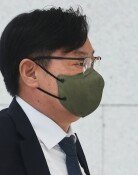[Editorial] Job Creation Needed for Recovery
[Editorial] Job Creation Needed for Recovery
Posted October. 27, 2009 07:54,
Real GDP in the third quarter rose 2.9 percent from the second quarter, the largest rise in 80 months. The government forecasts one percent growth in the fourth quarter, but if GDP grows more than 0.5 percent, Korea will avoid negative growth overall this year. Compared to September last year when the global financial crisis broke out, the economy has definitely gotten better.
The era of the three lows low interest rate, low value of the won, and low oil prices is ending, however. The three factors have helped Korea overcome the crisis, but the country cannot stay complacent. Capital expenditures grew 8.9 percent and private consumption 1.4 percent in the third quarter, but both indicators remain weak. In the first half of the year, increased state spending sustained the economy, but the governments contribution to GDP growth was negative 0.1 percent in the third quarter after fiscal spending was reduced. The government says it will use next years budget in advance, but there is a limit to what it can do.
Over the past 40 years, exports have enabled Korea to overcome five major economic crises, including this one. When demand from major economies contract after they cut their stimulus programs, Korean exports to them will suffer. The U.S. government said a couple of weeks ago that the recession is over, but many say recovery will be slow. Korea is vulnerable to recession as its top five export items account for 42 percent of all exports, a much higher figure than the range of 21-34 percent of other countries including the U.S., Germany, China and Japan. Korea needs to lower its export dependence, which has increased since the 1997 Asian financial crisis, and expand domestic consumption.
A government source said, We estimated that the number of jobless will decrease 100,000 to 150,000, but when economic conditions get better, the figure will be under 100,000. Unlike the 1997 financial crisis, Korea this time didn`t have to slash jobs because of fewer bankruptcies. The new jobs created this year, however, have mostly been in the public sector, including the Hope Work Project. The number of new jobs rose 71,000 last month, but that in the private sector decreased. To prevent sluggish job growth, the government must improve conditions for private investment.
Without investment in the private sector, a sustainable recovery will be difficult. Businesses should make preemptive investment and create jobs. The government should remove administrative regulations in the service sector to help manufacturing and the service industry grow hand in hand. Compounded by factors such as jobless growth, job creation could provide difficult even after the economy recovers. The government needs to focus on reducing destabilizing factors by closely monitoring labor conditions next year. Realistic services are needed, such as reeducating the unemployed and connecting employers with jobseekers faster.
Headline News
- Med professors announce intention to leave hospitals starting Thursday
- Bridge honoring Sgt. Moon Jae-sik unveiled in Pennsylvania
- Chief of Staff Chung tells presidential secretaries to stay away from politics
- US FTC bans noncompete agreements
- N. Korea launches cyberattacks on S. Korea's defense companies







